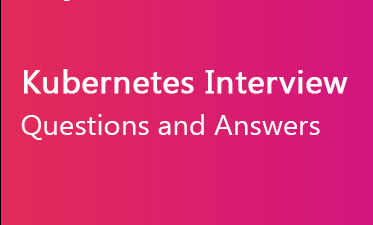DevOps, Day - 37
 Vrishni Shree V B
Vrishni Shree V B
What is Kubernetes and why it is important?
Kubernetes is an open-source container orchestration platform that automates the deployment, scaling, and management of containerized applications.
It's important because it simplifies container management, ensures high availability, and enables efficient scaling, making it easier to run and maintain applications in a cloud-native environment.
What is the difference between Docker Swarm and Kubernetes?
Docker Swarm is a simpler container orchestration tool, while Kubernetes is a more feature-rich and complex solution.
Kubernetes offers advanced features like auto-scaling, rolling updates, and service discovery, making it suitable for complex applications, while Docker Swarm is more straightforward and better for smaller deployments.
How does Kubernetes handle network communication between containers?
- Kubernetes creates a virtual network for pods, allowing containers in different pods to communicate through DNS or IP addresses. Network policies control traffic between pods.
How does Kubernetes handle scaling of applications?
- Kubernetes can automatically scale applications using the Horizontal Pod Autoscaler (HPA) based on CPU or custom metrics. You define desired states, and Kubernetes adjusts the number of replicas accordingly.
What is a Kubernetes Deployment, and how does it differ from a ReplicaSet?
- A Deployment manages the lifecycle of pods, allowing updates and rollbacks. A ReplicaSet ensures a specified number of replicas are running. Deployments provide more flexibility for application updates.
Explain the concept of rolling updates in Kubernetes.
- Rolling updates in Kubernetes involve replacing old pods with new ones, ensuring that the application remains available during the update. This prevents downtime and maintains application health.
How does Kubernetes handle network security and access control?
- Kubernetes uses Network Policies to control traffic between pods. Role-Based Access Control (RBAC) is used to manage access to resources and API actions, ensuring security.
Can you give an example of how Kubernetes can be used to deploy a highly available application?
- By creating multiple pods in a Deployment across different nodes, using a load balancer service to distribute traffic, and setting up auto-scaling, you can achieve high availability.
What is a namespace in Kubernetes? Which namespace does any pod take if we don't specify any namespace?
- A namespace is a virtual cluster that helps organize resources. If you don't specify a namespace, the pod is created in the
defaultnamespace by default.
- A namespace is a virtual cluster that helps organize resources. If you don't specify a namespace, the pod is created in the
How does Ingress help in Kubernetes?
- Ingress provides external access to services within the cluster. It acts as a layer 7 (HTTP) load balancer, routing traffic to the appropriate services based on hostnames or paths.
Explain different types of services in Kubernetes.
- Kubernetes has four types of services: ClusterIP (internal), NodePort (exposes on each node's IP), LoadBalancer (exposes externally), and ExternalName (maps to an external DNS name).
Can you explain the concept of self-healing in Kubernetes and give examples of how it works?
- Self-healing means Kubernetes automatically replaces failed containers or nodes to maintain desired states. For example, if a container crashes, Kubernetes starts a new one.
How does Kubernetes handle storage management for containers?
- Kubernetes provides Persistent Volumes (PVs) and Persistent Volume Claims (PVCs) to manage storage for containers, allowing data to persist across pod restarts.
How does the NodePort service work?
- NodePort exposes a service on a specific port on each node in the cluster. It forwards traffic to a specific port on the service.
What is a multinode cluster and a single-node cluster in Kubernetes?
A multinode cluster has multiple worker nodes, offering high availability.
A single-node cluster consists of only one node, typically used for development or testing.
Difference between
createandapplyin Kubernetes?createcreates resources, but any subsequent changes require deleting and recreating.applyis used to create or update resources and is recommended because it can manage resources more effectively, allowing you to apply changes incrementally without disrupting existing resources.
Thank you so much for reading
Follow me on LinkedIn to see interesting posts like this : )
Subscribe to my newsletter
Read articles from Vrishni Shree V B directly inside your inbox. Subscribe to the newsletter, and don't miss out.
Written by

Vrishni Shree V B
Vrishni Shree V B
💻 Python | Docker | Jenkins | Networking | Git | Linux 💻 Passionate about leveraging technology to drive efficiency and deliver innovative solutions. Proficient in Python development, Docker containerization, Jenkins automation, computer networking, Git version control, and Linux administration. Skilled in collaborating with diverse teams to deliver high-quality software products. Proficient in AWS EC2 instance management and deployment. Seeking new opportunities to apply my expertise and contribute to impactful projects. Let's connect and explore how we can work together! Inter-personal Skills: Communication, Adaptability, Emotional intelligence, Active listening, Collaboration. Happy To Connect🔗😊 Feel free to reach me out😃@ --> vrishnishreevb531@gmail.com 📬